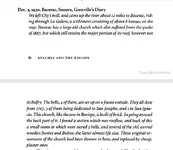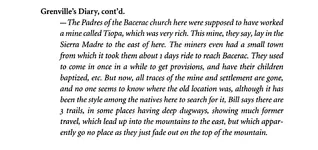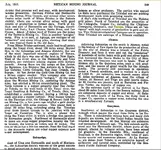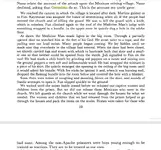Deducer wrote
Roy, considering the tenacity of the searches that took place in Mexico City, is it not reasonable that the Spanish might have sent out search parties to the missions in the Pimeria Alta, or at least the better-known ones? We do know they were also sent to Puebla from this excerpt in Fr. Och's diary:
Another, and choicer morsel: In Puebla, twenty-four hours from Mexico in the College of the Holy Ghost, treasure-hunting caused an even greater turmoil
I will grant that it is reasonable to speculate that the Spanish sent out search parties to the missions and colleges, yet there is no record of any such searches at any of the missions in northern Mexico or Baja, so far as I could learn. Not even at Arizpe. It is possible that after the negative results at Mexico city and Puebla and perhaps other major facilities, where apparently the Spanish had presumed the wealth to be accumulating,
PERHAPS it was thought to be a waste of time to search at the lesser places like missions or visitas. Speaking of San Xavier del Bac, Tumacacori, Guevavi, Calabazas, Arivaca, the visita at Tubac garrison (where Spanish troops were located, should have been easy) Magdalena, Caborica etc there was hardly even an examination of what was visible at the time of the "roundup"; the Franciscans did an inventory on their arrival and as father Garces noted, many things which were known to have been in the mission churches had vanished, and I know of at least one letter of complaint about the valuables disappearing from the missions during the period when the Jesuit padres had been marched off, and the Franciscans arrived to replace them. The valuables which were disappearing included herds of cattle, sheep, horses, stores of grain in the warehouses etc not just silver statues or gold monstrances.
Even so, the Franciscans were able to find enough gold and silver church "ornaments" along with bells, robes etc in the Baja Jesuit missions to help outfit their expansion into California Alta, though not as much as was desired of course.
I will grant that it is possible that extensive searches were done at all of the frontier missions and visitas, and I had imagined that must have happened yet there is no record of any search at any of these frontier missions in northern Mexico, and a quite belated one at the Baja missions. Even there, the only search mentioned is at ONE mission that is not named, may have been the main one at Loreto? If there had been searches done at the frontier missions, I would think that someone would have mentioned it, like father Garces when writing of how little remained at "his" new missions as he found them.
I welcome any evidence from anyone that the Spanish authorities searched at the Arizona, Sonora missions during the Jesuit expulsion. I found none.
Don Jose de la Mancha wrote
Nah Oro, they are inside of a closed (still, sniff ) deposit.. Most are constantly not differentiating between the mission priest and Rome's Jesuits / coadjutors. The mission priest starved and ate grasshoppers with his flock, but they were harsh disciplinarians Rome's people were merciless if it was in the cause - like protecting a few million Reales..
Do not forget that the coadjutors were very much under the orders of the priests. The priests at the missions were very like little despots, "bosses" as the Indios seem to have viewed them, the coadjutors could not operate without the authority of the priests, and this extended to punishments. Punishments (which I presume executions would fall under) were usually done by trusted Indios, so that the priests did not soil their hands. It is noted in a number of sources that nothing took place without the nod of the priests. I would first suspect a mass grave of Indians whom died of violence to be the casualties of the Apache attack found in legend and referred to in some historic sources such as the "Indians of North America" which records Teopira having been "depopulated" by Apache surprise attack. I do not disagree that a coadjutor was likely the man in charge at some operations, yet as we see in the letters of father Segesser, a padre whom spent time in Arizona, he complained of being forced to "oversee everything" and the expense of hiring an overseer, and the reference to his not being able to work the mines in comfort. No mention of any coadjutor being responsible for these activities - and it looks like not every mission had coadjutors, or not all of the time.
Hmm can't seem to say this in a few words but anyway I believe that
the Jesuit priests had made their Indios the protectors of the mission treasures. In support of this contention, the otherwise strange events at San Xavier del Bac, on the return of Jesuits in early 1860s, it was the Indians themselves that brought the valuable ornaments out to show to their padres, and on the padres departing due to the Civil War, it was again the Indians that took care of hiding those ornaments again. Plus most of the "legends" of lost mines, the Indians knew of the locations and passed along some information to early Anglo treasure hunters. You would not massacre the people you were trusting to guard the treasures, it is just not logical, and we have an alternate explanation that is perfectly plausible in the end of Tayopa. Remember Tayopa was abandoned long before the Jesuits were suppressed. That 1646 inventory found by Flipper was
likely due to bishop Palafox attempting to rein in the Jesuits,
not a report of the findings of Spanish authorities.
Please do continue, sorry for the long-winded post.
Oroblanco














